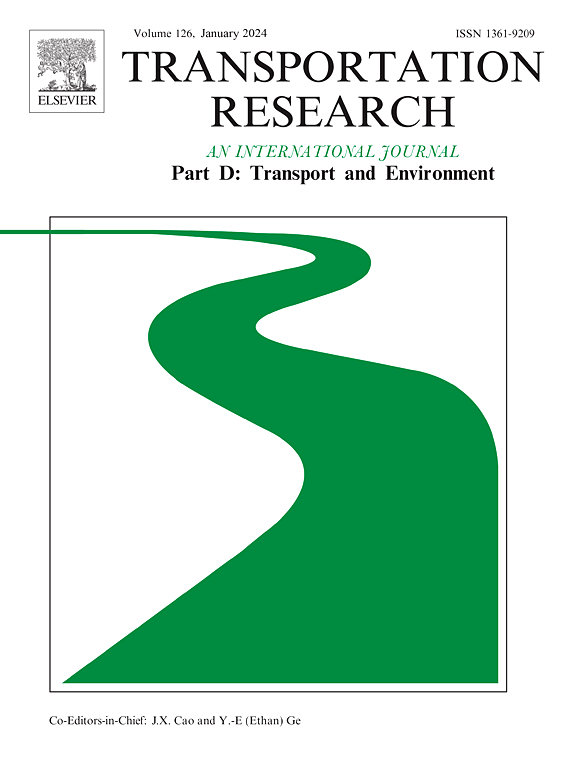Nonlinear and Spatially-Varying effects of the built environment on dockless Bike-Sharing usage
IF 7.3
1区 工程技术
Q1 ENVIRONMENTAL STUDIES
Transportation Research Part D-transport and Environment
Pub Date : 2025-05-15
DOI:10.1016/j.trd.2025.104807
引用次数: 0
Abstract
This study examines the nonlinear and spatially-varying effects of the built environment (BE) on dockless bike-sharing (DLBS) usage in Shanghai, China. By combining a machine learning model, eXtreme Gradient Boosting, with a local model-agnostic interpretation method, SHapley Additive exPlannations, we explore the intricate heterogeneity in the relationship between the BE and DLBS usage at fine-grained grid-cell scale. Our analysis shows that the relationship varies significantly across space and varying ranges of BE features. Notably, we find significant threshold effects: the positive associations between high-density-related BE features and DLBS usage may level off or turn negative beyond certain thresholds. These minimal or even adverse effects are particularly evident in the urban core. Furthermore, we apply hierarchical cluster analysis to identify six clusters of grid cells with distinct BE-DLBS patterns, providing a basis for context-sensitive policies to promote cycling. Tailored strategies for each cluster are also discussed.
建筑环境对无桩共享单车使用的非线性空间影响
本研究探讨了建筑环境(BE)对中国上海无桩共享单车(DLBS)使用的非线性和空间变化影响。通过将机器学习模型eXtreme Gradient Boosting与局部模型无关的解释方法SHapley Additive explanatory相结合,我们探索了细粒度网格细胞尺度下BE和DLBS使用之间复杂的异质性关系。我们的分析表明,这种关系在空间和BE特征的不同范围内变化显著。值得注意的是,我们发现了显著的阈值效应:高密度相关BE特征和DLBS使用之间的正相关关系可能在超过某些阈值后趋于平稳或变为负相关。这些微小甚至不利的影响在城市核心尤为明显。此外,我们运用层次聚类分析方法识别出6个具有不同BE-DLBS模式的网格细胞簇,为促进循环的上下文敏感策略提供了基础。还讨论了针对每个集群的定制策略。
本文章由计算机程序翻译,如有差异,请以英文原文为准。
求助全文
约1分钟内获得全文
求助全文
来源期刊
CiteScore
14.40
自引率
9.20%
发文量
314
审稿时长
39 days
期刊介绍:
Transportation Research Part D: Transport and Environment focuses on original research exploring the environmental impacts of transportation, policy responses to these impacts, and their implications for transportation system design, planning, and management. The journal comprehensively covers the interaction between transportation and the environment, ranging from local effects on specific geographical areas to global implications such as natural resource depletion and atmospheric pollution.
We welcome research papers across all transportation modes, including maritime, air, and land transportation, assessing their environmental impacts broadly. Papers addressing both mobile aspects and transportation infrastructure are considered. The journal prioritizes empirical findings and policy responses of regulatory, planning, technical, or fiscal nature. Articles are policy-driven, accessible, and applicable to readers from diverse disciplines, emphasizing relevance and practicality. We encourage interdisciplinary submissions and welcome contributions from economically developing and advanced countries alike, reflecting our international orientation.

 求助内容:
求助内容: 应助结果提醒方式:
应助结果提醒方式:


